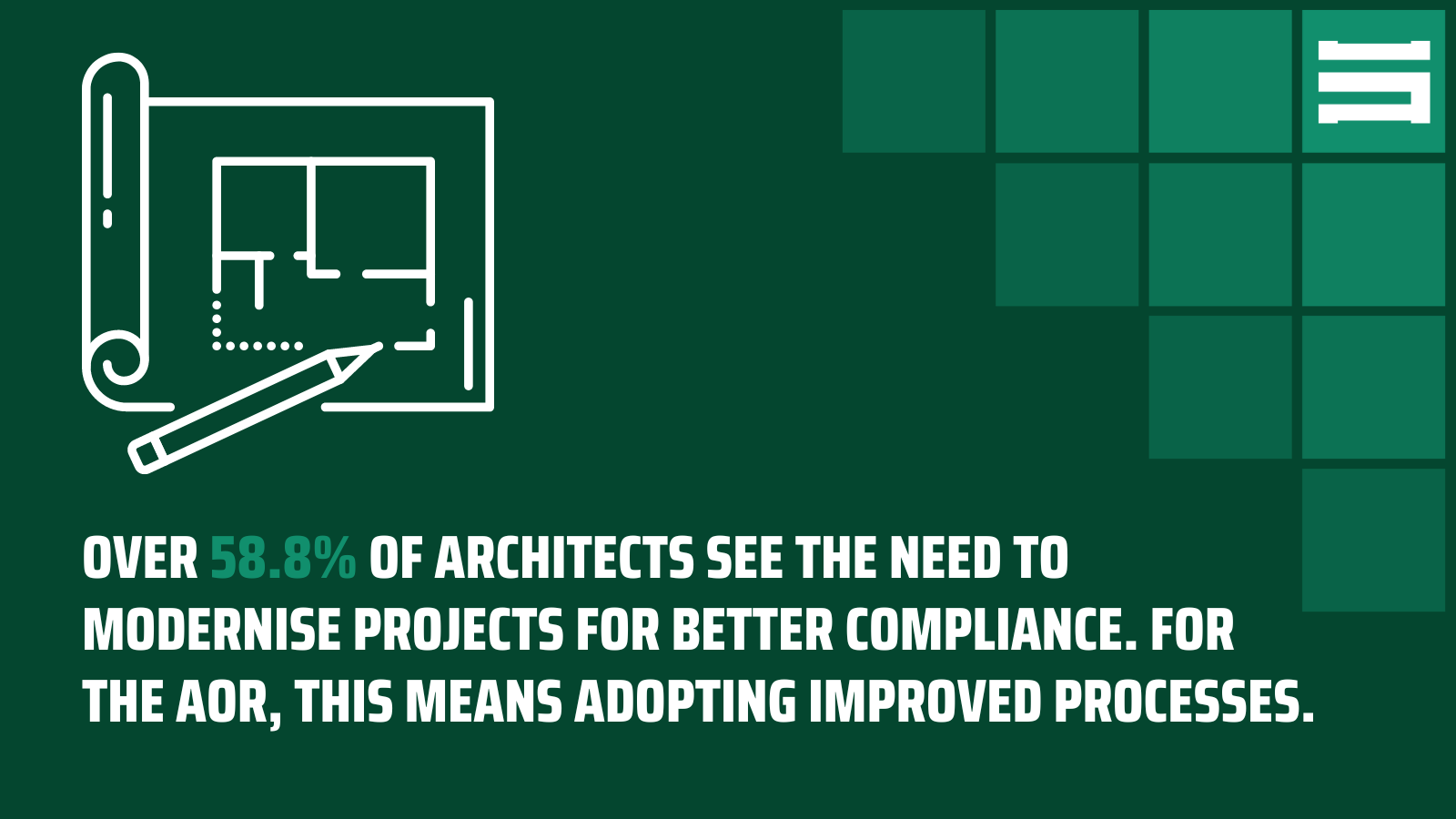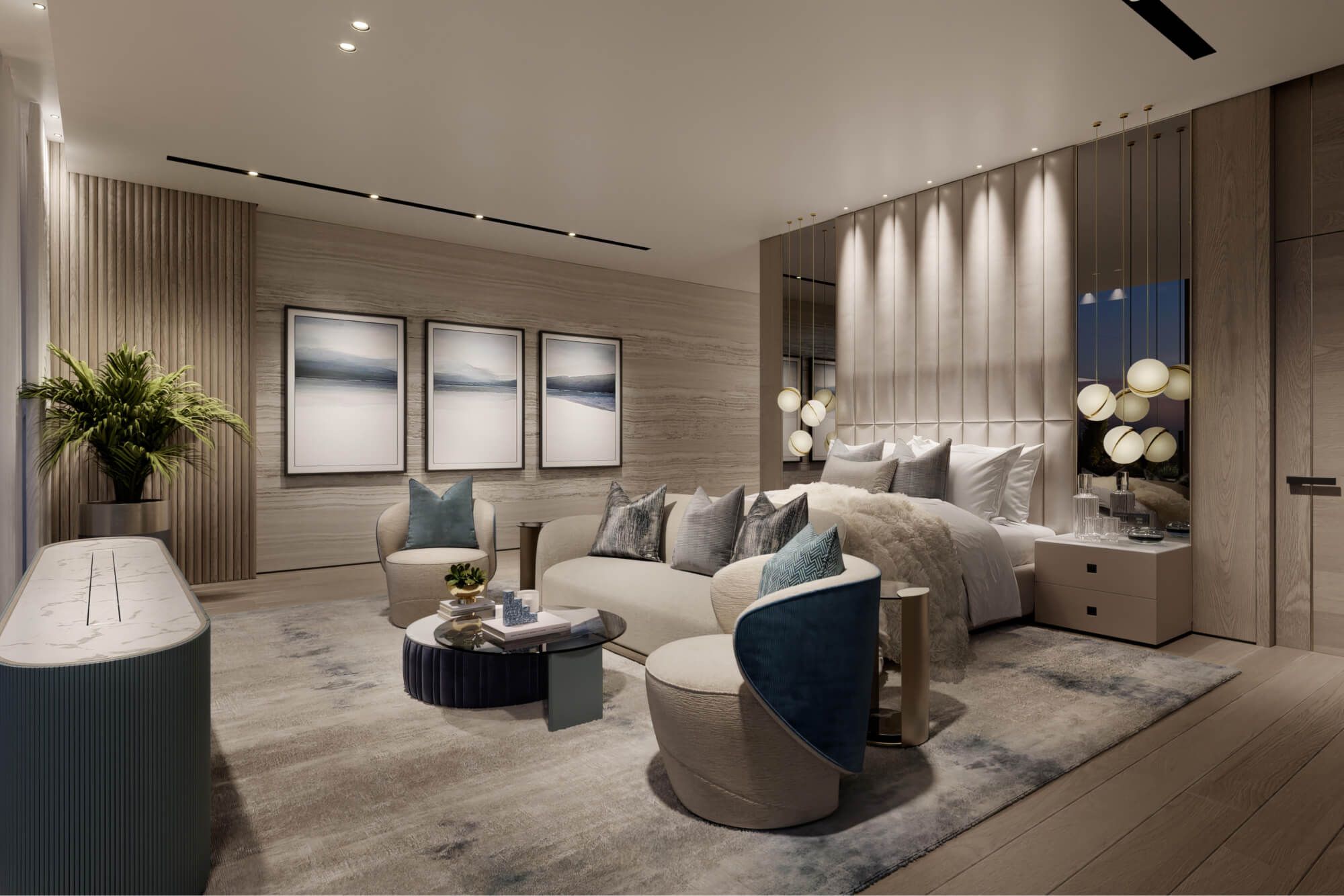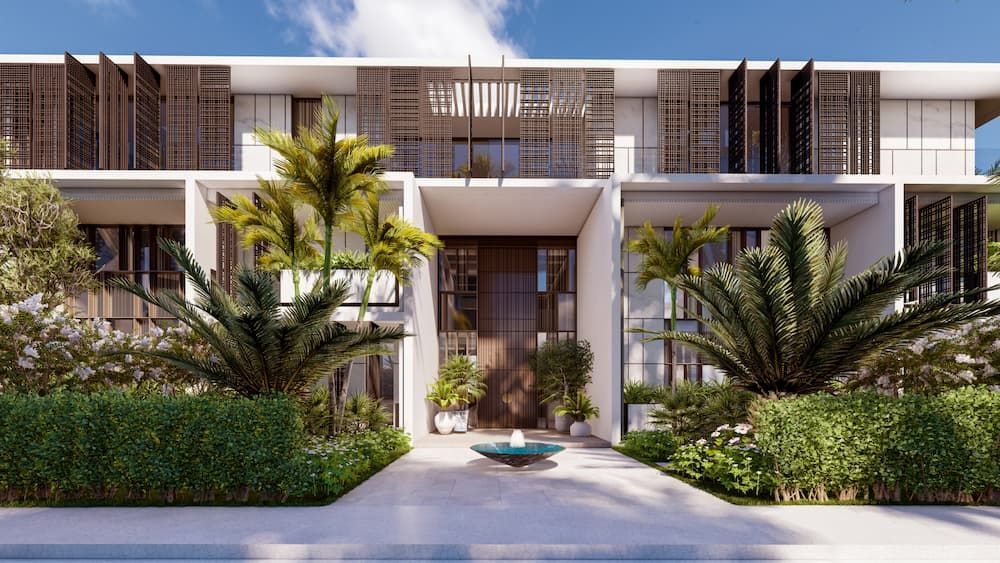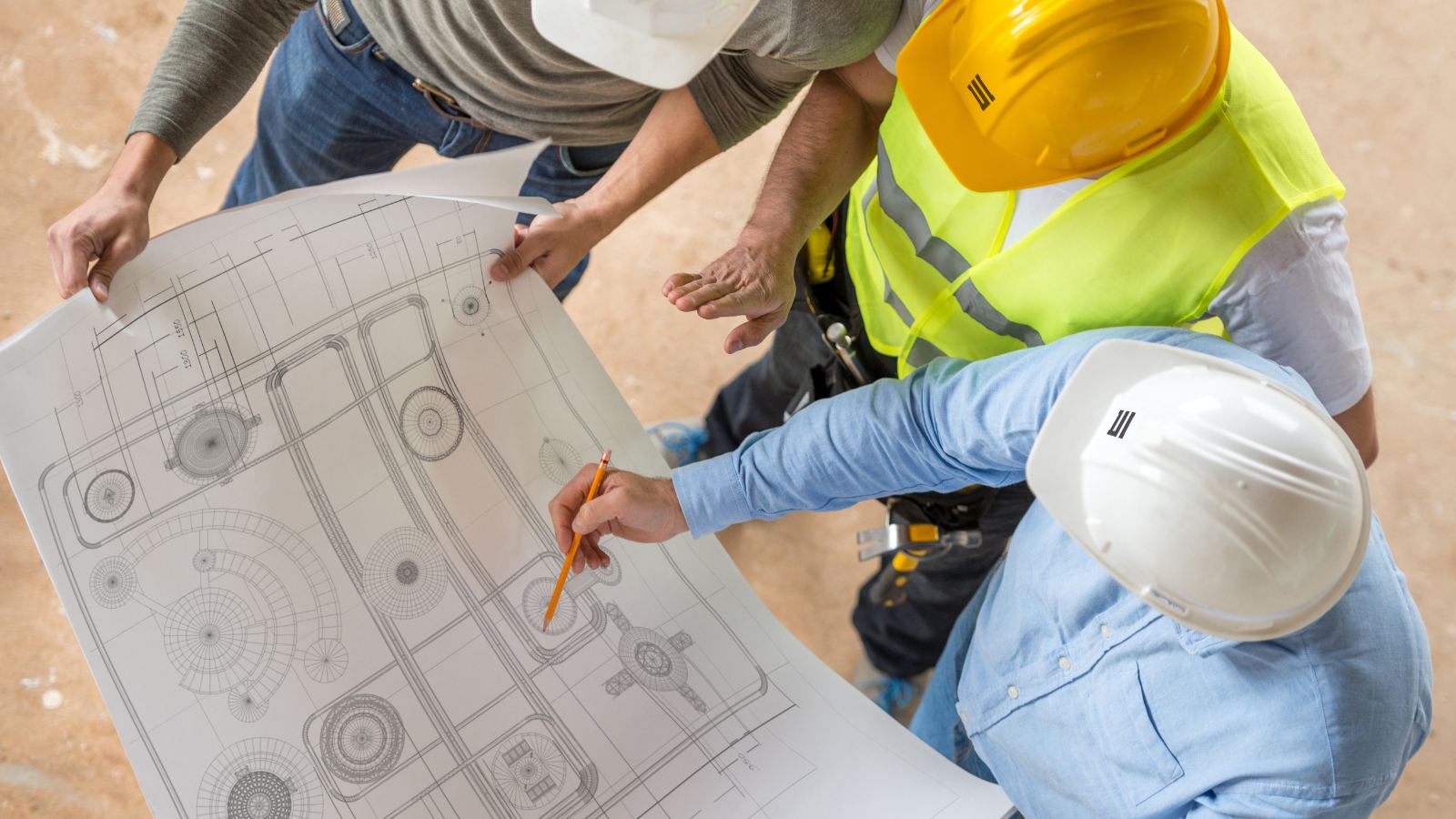Construction projects are intricate operations that require the collaboration of numerous professionals to ensure everything runs smoothly—safely, on schedule, and within the set budget. Among the pivotal players, the Architect of Record (AOR) and the Design Architect play essential roles in steering the project's progress.
While both are crucial to a project’s success, their roles, particularly when it comes to overseeing construction, differ in significant ways. In this blog, we’ll explore how their supervision responsibilities vary, the advantages of bringing an AOR on board, common hurdles, and tips for effective construction project supervision.
Understanding the Supervision Roles of the Architect of Record and Design Architect
The Design Architect and Architect of Record work in tandem but have distinct roles during the construction phase:
1. The Design Architect’s Role in Supervision
The Design Architect primarily focuses on the creative vision of the project. They are responsible for ensuring that the construction adheres to the initial design intent, aesthetic goals, and material specifications. Their supervision often includes periodic site visits to check that finishes, colours, and design elements are being executed as planned. They play a critical role in resolving any design-related issues that arise during construction, ensuring the final product aligns with the client's vision.
2. The Architect of Record’s Role in Supervision
The AOR is tasked with overseeing the technical execution and regulatory compliance of the construction project. Their duties include:
- Ensuring Safety Requirements: The AOR ensures that the construction adheres to all safety standards and building codes. This involves regular site inspections to monitor the safety of construction practices and the structural integrity of the project.
- Adhering to Regulatory Compliance: They make certain that the project complies with all local regulations and building codes, preventing potential legal issues and ensuring the safety and feasibility of the design.
- Detailed Construction Documentation: The AOR prepares comprehensive construction documents that guide the construction process, ensuring all elements are built as per the approved plans.
- Handling Permits and Approvals: The AOR handles the submission of documents for permits and approvals from authorities, facilitating a smooth construction process.
What are the Differences Between the Architect of Record and Design Architect?
The roles of the Architect of Record (AOR) and Design Architect are distinct, yet complementary, contributing to the success of a construction project in different ways.
1. Creative Vision vs. Technical Execution:
- Design Architect: They are responsible for the creative direction of a project, focusing on conceptualising the design, aesthetics, and functionality. Their role involves transforming the client’s vision into a cohesive and artistic plan, encompassing spatial layout, material choices, and the building’s visual character. They usually provide sketches, 3D models, and renderings that illustrate the final structure’s appearance. Once the design is finalised, their role often diminishes, although they may continue as consultants during construction to ensure the concept is faithfully executed.
- Architect of Record (AOR): They manage the technical implementation of the design. Their job is to ensure that the Design Architect’s vision is practical and compliant with local building codes, safety standards, and other technical requirements. The AOR is actively involved throughout the construction process, overseeing adherence to the approved plans, conducting site inspections, and ensuring any necessary adjustments comply with regulatory and safety standards.

A recent study showed that a huge increase in building code violations has happened in new homes, especially apartments and condos. In fact, these violations went from 43% in 2012 to a shocking 90% in 2019. This underscores the importance of the AOR's role in ensuring that construction adheres to local building codes and regulations, which can help prevent such violations and the associated costs.
2. Involvement in Project Phases:
- Design Architect: Plays a pivotal role during the early stages of the project, including concept development, schematic design, and design development. They are heavily involved in client consultations, conceptualising the overall design, and refining it through multiple iterations. During this phase, they consider factors such as the building’s purpose, user experience, aesthetic preferences, and environmental impact. Their primary goal is to develop a design that meets the client's aspirations while also addressing functional and contextual requirements.
- Architect of Record (AOR): Their engagement begins during the later stages of the design phase, often collaborating with the Design Architect to ensure the design is compliant and feasible. The AOR’s role becomes crucial once the project moves into the construction documentation phase. They take the design and convert it into detailed construction documents, including technical drawings and specifications required for obtaining permits and guiding construction. Throughout the construction phase, the AOR is actively involved, addressing technical queries, reviewing construction progress, and ensuring compliance with the approved plans and regulations.
3. Legal and Compliance Responsibilities:
- Design Architect: Has limited legal responsibility, primarily focusing on design-related aspects. They ensure the design aligns with the client's vision and that it meets general aesthetic and functional requirements. However, they are not legally responsible for compliance with building codes or regulations. While they may advise on compliance issues, it is not their primary responsibility, and they are not held accountable for regulatory adherence.
- Architect of Record (AOR): Bears full legal responsibility for ensuring that the project complies with all local building codes, safety standards, and regulations. The AOR is accountable for obtaining all necessary permits and approvals, conducting regular site inspections, and certifying that the construction adheres to the approved plans. In case of any legal issues related to compliance, the AOR is held responsible, making their role critical in safeguarding the construction project against legal and regulatory risks.
Benefits of Hiring an Architect of Record for Construction Supervision
Hiring an AOR provides several advantages that are vital for the successful delivery of construction projects:
1. Expertise in Local Regulations
The AOR's deep understanding of local building codes and regulations is invaluable. This expertise ensures that the project meets all legal requirements, reducing the risk of costly delays and fines.
2. Enhanced Quality Control
Regular site inspections by the AOR help maintain high standards of construction quality. Their supervision ensures that the work conforms to the approved plans and specifications, preventing deviations that could compromise the project’s integrity.
3. Managing Potential Risks
The AOR is proactive in identifying potential issues related to compliance and construction quality. By addressing these concerns early, they help avoid significant project delays and additional costs.
4. Streamlining Communication Efforts
The AOR acts as a central point of contact between the construction team, design team, and regulatory authorities. This streamlined communication helps in resolving issues quickly and keeps the project on track.
5. Maintaining Client Accountability
With an AOR involved, the client has a designated professional responsible for ensuring that the project is built according to the approved plans and complies with all legal requirements. This accountability is crucial for maintaining the project’s integrity.
What are the Common Challenges in AOR and Design Architect Collaboration?

Despite their complementary roles, effective collaboration between the AOR and Design Architect can be challenging:
1. Role Overlaps and Conflicts:
If roles and responsibilities are not clearly defined, it can lead to misunderstandings and conflicts. Establishing clear role definitions and responsibilities at the start of the project is essential.
2. Managing Design Changes
Design changes are often necessary during construction due to unforeseen site conditions or client requests. The AOR must ensure that these changes are documented and comply with local regulations, while the Design Architect must ensure they do not compromise the design integrity.
3. Coordination of Documents
Accurate and up-to-date documentation is critical for project success. The AOR and Design Architect must work closely to ensure that all construction documents reflect any changes and that there is a clear record of these changes.
Best Practices for Effective AOR and Design Architect Collaboration
1. Early Involvement of Both Parties
Engaging the AOR early in the design process helps in identifying potential regulatory and technical challenges that could impact the project’s feasibility.
2. Regular Coordination Meetings
Holding regular meetings between the AOR, Design Architect, and construction team helps in discussing project progress, design changes, and potential issues. This keeps everyone aligned and informed.
3. Clear Communication Protocols
Establishing clear communication channels and protocols is essential for smooth project execution. All parties should be aware of who to contact for specific issues and the preferred methods of communication.
4. Comprehensive Documentation Review
Both the AOR and Design Architect should engage in continuous documentation review to ensure all plans are current and reflect any agreed-upon changes. This reduces the risk of discrepancies during construction.
5. Client Engagement
Keeping the client informed and engaged throughout the project helps manage expectations for a collaborative environment. Both the AOR and Design Architect should be transparent with the client about any changes or challenges that arise.
Addressing Pitfalls in Architect of Record and Design Architect Projects
Projects involving both an Architect of Record (AOR) and Design Architect can face several challenges. Awareness and proactive management of these pitfalls are essential for successful project delivery.
Lack of Coordination: Poor coordination between the AOR and Design Architect can lead to inconsistencies and misalignment between the design and construction phases. Regular meetings, clear communication protocols, and a centralised platform for sharing information can help mitigate this issue. By establishing a collaborative environment and ensuring that all stakeholders are on the same page, project teams can avoid misunderstandings and delays.
Unclear Division of Responsibilities: When roles and responsibilities are not clearly defined, it can lead to confusion, delays, and potential conflicts. A well-documented agreement outlining each party's duties, decision-making authority, and reporting requirements is necessary to prevent such issues. By establishing a clear framework for collaboration, project management teams can avoid overlapping responsibilities and ensure that each professional is accountable for their specific tasks.
Legal and Compliance Issues: Failure to adhere to regulatory requirements can result in legal challenges, project delays, and financial losses. The AOR's role in managing compliance is critical, and their involvement from the early stages of the project can help prevent such issues. By conducting thorough risk assessments, identifying potential legal and compliance risks, and implementing mitigation strategies, project teams can ensure that the construction project is delivered in accordance with all applicable regulations.

Over 58.8% of architecture firms recognise the need to modernise project management processes to better address compliance and legal requirements. For the Architect of Record (AOR), this highlights the importance of adopting updated management strategies to ensure that all regulatory obligations are met efficiently throughout the project. By doing so, the AOR can uphold legal oversight and support the smooth delivery of the project, mitigating risks associated with non-compliance and potential delays.
What are the Key Takeaways for Effective Construction Supervision?
Clear Role Definition and Responsibilities
- Establish clear roles and responsibilities: Define the specific duties and boundaries of the Architect of Record (AOR) and the Design Architect. This prevents confusion and ensures that each professional is accountable for their respective tasks.
- Create a written agreement: Formalise the roles and responsibilities in a written agreement that outlines the scope of work, decision-making authority, and reporting requirements for both parties.
- Regularly review and update: As the project progresses, revisit the agreement to ensure it remains aligned with the evolving needs and circumstances.
Effective Communication and Collaboration
- Maintain open lines of communication: Foster a culture of open communication between the AOR, Design Architect, construction team, and client. Encourage regular meetings, email exchanges, and site visits to discuss progress, challenges, and decisions.
- Use a centralised platform: Implement a project management software or online platform to share documents, track progress, and facilitate collaboration among team members.
- Establish clear communication protocols: Define how information will be shared, decisions made, and changes communicated. This ensures everyone is on the same page and avoids misunderstandings.
Proactive Risk Management
- Identify potential risks: Conduct a thorough risk assessment to identify potential challenges that could impact the project's timeline, budget, or quality.
- Develop mitigation strategies: For each identified risk, create a plan to address it proactively. This may involve contingency planning, insurance, or alternative solutions.
- Monitor and adjust: Continuously monitor the project for emerging risks and adjust mitigation strategies as needed.
Commitment to Quality and Compliance
- Regular site inspections: Conduct frequent inspections to verify that construction work adheres to the approved plans, specifications, and quality standards.
- Adhere to building codes and regulations: Ensure that the project complies with all relevant building codes, safety standards, and local regulations.
- Implement quality control measures: Establish quality control procedures, such as inspections, testing, and documentation, to maintain high standards of workmanship.
- Seek expertise: Consult with experts as needed, such as engineers or materials specialists, to ensure the project meets the required standards.
Conclusion
The Architect of Record plays a crucial role in ensuring the success of construction projects by overseeing the execution of the design in accordance with all legal and technical standards. Working closely with the Design Architect, they strike a careful balance between the envisioned aesthetics and the practical aspects of construction. By clearly defining their responsibilities, applying best practices, and steering clear of common mistakes, they help to ensure projects are completed efficiently, safely, and with the highest quality standards in mind.
About us
Stonehaven is a trusted project management company and construction consultant based in Dubai, offering comprehensive construction management services across the UAE with offices located in Dubai, UK and Sri Lanka. As one of the leading project management companies in Dubai, we manage projects from inception to completion, ensuring quality, efficiency, and cost-effectiveness at every stage.
We deliver value through expert project management consultancy services, tailored to meet the unique needs of each client. Our core services include Cost Management, Project Management, Construction Supervision, Engineering Support, Design Support, and Marketing & Communications. Whether you’re looking for construction consultants or project managers in the UAE and wider GCC region, Stonehaven is your trusted partner for achieving excellence in your next project.
Stonehaven provides professional Architect of Record (AOR) services, specialising in delivering projects that meet the highest standards of compliance, quality, and design integrity. Our experienced team works closely with clients, Design Architects, and construction teams to ensure seamless project supervision from start to finish. With a focus on maintaining regulatory compliance and construction quality, we are committed to delivering successful outcomes for all our projects.
Contact us today to learn more about our AOR services and how we can support your construction project.








